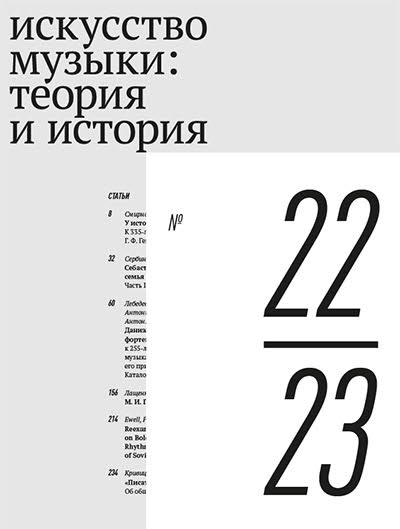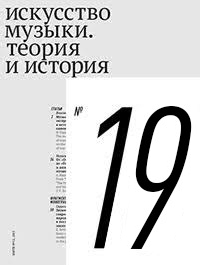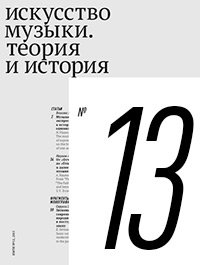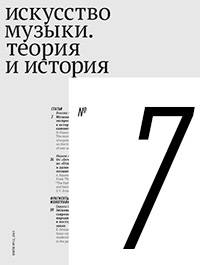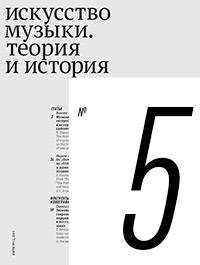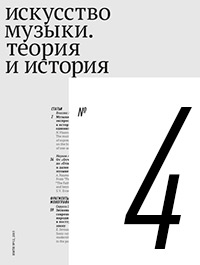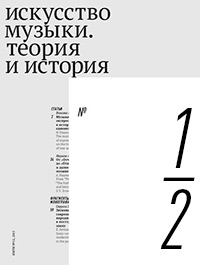2014 № 9
The articles included in the 9th issue of the Internet journal Iskusstvo muzïki. Teoriya i istoriya (‘Art of Music. Theory and History’) represent a wide array of musicological topics in terms of both space and time. Europe, Russia, Orient; the Middle Ages, the 19th century, and the modern times; instrumental and vocal music; a composer’s practice and scientific tradition; the art of G. Pasta, S. Heinefetter, A. Bishop, N. Rimsky-Korsakov, P. Boulez, P. Tchaikovsky, and A. Schnittke; the medieval Arab music theory – such are the diverse subject matters examined by the native and foreign authors of the journal’s new issue.
The article deals with guest performances of G. Pasta, A. Bishop, and S. Heinefetter in Russia. Taking newspaper publications as the basis for in-depth research, the author restores the earlier unknown circumstances of the life and performances of European primadonnas in St Petersburg and Moscow, brings to light the programs of their recitals and their operatic repertoire, analyzes the Russian audience’s perception of the art of famous sopranos and the general image of a foreign diva that was formed as a result of their appearances.
The essay focuses on the literary side of Christian music drama and its decisive influence on the structure of the operas of this type. As is shown, the concept of The Tale of Tsar Saltan comes to a large extent from the works of A.N. Veselovsky: both their material and the method of comparative literary analysis, as well as the very idea of borrowing as a dialogue of cultures, had a powerful influence on the librettist V.I. Bel’sky, whose texts, in their turn, gave to N.A. Rimsky-Korsakov an impulse to take a new direction in his work as composer.
The Arabic medieval writings on music describe, in particular, its theoretical aspects and psychological effects, a whole gamut of experiences it produces, the variety of its virtues. The absence of musical notation and of concrete relics of the sophisticated musical art of the remote ages makes these descriptions largely arcane. On the example of four case studies the author shows how rich are the writings in question in concealed and symbolical meanings, whose deciphering requires a good command of the language, a solid knowledge of the culture, and a direct firsthand consultation of manuscript documents.
The article is based on the paper presented at the international conference “Russian–French Musical Dialogues” (“Keldïsh Readings-2012”, State Institute of Arts Studies). The main object of analytic research is Boulez`s work in the late 90s (according to J.J. Nattiez, the period of his “second practice”). The composer finds new fundamentals of his work not in the intellectual concepts such as “series”, but in the bodily orientated performance practice, where “musical gesture” serves as a main element analogical (in a way) to classical theme or motif. These ideas are developed by the composer in his own analysis of the piece “Sur Incises”, which is the starting point for the present article.
The major work in preparation, whose fragments are published here, is the first attempt to unite within a single book the information about all the Russian-language items on Tchaikovsky published during 140 years. The author explored materials kept in Russian libraries, as well as published in general bibliographical surveys, musicological studies, and monographs on Tchaikovsky.









